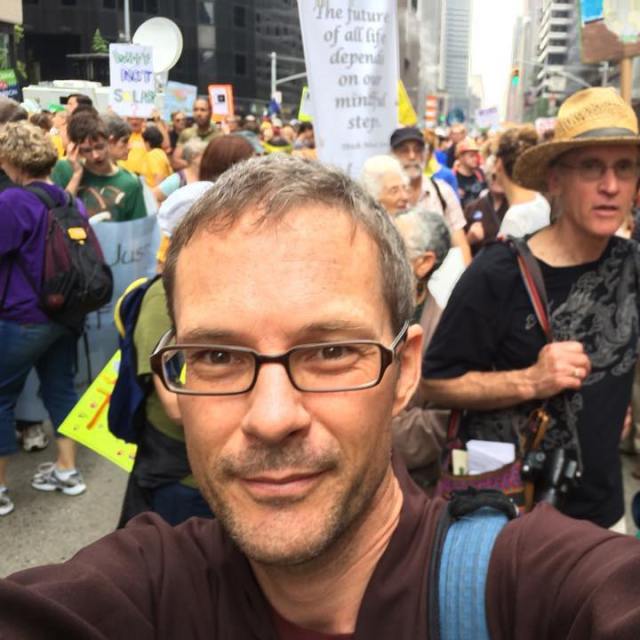The Four Noble Truths Episode of Down with the Dharma: John gives a Dharma talk on The Four Noble Truths from an early Buddhist perspective and from the perspective of Daoist internal alchemy.
The Four Noble Truths
The three aspects: conceptual knowledge, practice, fruition
Suffering, suffering should be understood, suffering has been understood
Cause of suffering is craving, craving should be abandoned, craving has been abandoned
Cessation of suffering, cessation should be realized, cessation has been realized
Path to cessation of suffering, the path should be cultivated, that path has been cultivated
Three kinds of suffering: regular suffering, suffering due to change, suffering due to conditioned states
Consciousness feeding on the five aggregates, I-making and mine-making
The six links of dependent origination:
Body/mind, contact, sensation, craving, grasping, becoming
The three poisons of ignorance, craving, and aversion
Craving/aversion as the only link in the chain where a person has agency
The practice is to develop awareness of and equanimity towards body sensation in order to not be overwhelmed by and identified with a reactive emotion. Short term high, long term crash. Extractivism. Good in the beginning, middle, and end. Regeneration. Example of Daoist alchemy. Small, medium, and large cessation
Eightfold Path: view, intention, speech, action, livelihood, effort, mindfulness, concentration
Threefold training: precepts, concentration, insight
Five precepts: no killing, no stealing, no sexual misconduct, no false or harmful speech, no intoxicants
Right Effort: cultivate wholesome mental formations that are arising, bring up wholesome mental formations that are not arising, abandon unwholesome mental formations that have arisen, do not cultivate unwholesome mental formations that are not arising
Four Foundations of Mindfulness: body, sensation, mind, Dhamma. Three one structure. Body, breath, mind, Buddha Nature. Asana, pranayama, meditation, Samadhi. Jing, qi, shen, Dao.
Cultivate well being in body and mind, become sensitive to disturbance of body and mind, let go of disturbance, enjoy deeper well being of body and mind, become sensitive to disturbance, etc
The four jhanas.
The Four Fruits of Attainment: Stream Entry, Once Returner, Non-Returner, Arahat
The 10 Fetters Belief in rites and rituals, belief in self, doubt
Craving and aversion
Craving for subtle realm rebirth, I-making, ignorance
Bibliography
Blofeld, John. Taoism: The Road to Immortality. Shambhala, 2000.
Bodhi, Bhikkhu, trans. “Setting in Motion the Wheel of the Dhamma—Bhikkhu Bodhi.” SuttaCentral. Accessed September 8, 2019. https://suttacentral.net/sn56.11/en/bodhi.
Buddhadasa, Bhikkhu. Anapanasati: Mindfulness of Breathing. First. Vol. I,II,III. Bangkok: Sublime Life Mission, 1976.
———. Mindfulness With Breathing : A Manual for Serious Beginners. Wisdom Publications, 1988.
SuttaCentral. “English Translation of MN 118, ‘Mindfulness of Breathing.’” Accessed December 5, 2017. https://suttacentral.net/en/mn118.
SuttaCentral. “English Translation of SN 36.6, ‘The Dart.’” Accessed February 27, 2018. https://suttacentral.net/en/sn36.6.
Goenka, S. N. Discourse Summaries. Seattle, WA: Pariyatti Publishing, 2000.
Hanh, Thich Nhat. Path of Emancipation. Full Circle, 2010.
SuttaCentral. “Higher Fetters—Bhikkhu Bodhi.” Accessed February 18, 2019. https://suttacentral.net/sn45.180/en/bodhi.
“Kalaha-Vivada Sutta: Quarrels & Disputes.” Accessed August 7, 2018. https://www.accesstoinsight.org/tipitaka/kn/snp/snp.4.11.than.html.
SuttaCentral. “Lower Fetters—Bhikkhu Bodhi.” Accessed February 18, 2019. https://suttacentral.net/sn45.179/en/bodhi.
Mu, Wang. Foundations of Internal Alchemy: The Taoist Practice of Neidan. Translated by Fabrizio Pregadio. Mountain View, Calif.: Golden Elixir Press, 2011.
Pregadio, Fabrizio. Awakening to Reality: The “Regulated Verses” of the Wuzhen Pian, a Taoist Classic of Internal Alchemy. Mountain View, Calif: Golden Elixir Press, 2009.
SuttaCentral. “Sāriputta—Bhikkhu Bodhi.” Accessed August 10, 2018. https://suttacentral.net/an3.33/en/bodhi.
Sujato, Bhikkhu, trans. “Rolling Forth the Wheel of Dhamma —Bhikkhu Sujato.” SuttaCentral. Accessed September 8, 2019. https://suttacentral.net/sn56.11/en/sujato.
Sumedho, Ajhan. The Four Noble Truths. Hertfordshire: Amaravati, 1992.
Thanissaro, Bhikkhu, trans. “Dhammacakkappavattana Sutta: Setting the Wheel of Dhamma in Motion.” Accessed September 8, 2019. https://www.accesstoinsight.org/tipitaka/sn/sn56/sn56.011.than.html.
Thanissaro, Bhikkhu. The Paradox of Becoming. Valley Center, CA: Thanissaro Bhikkhu, 2008.






